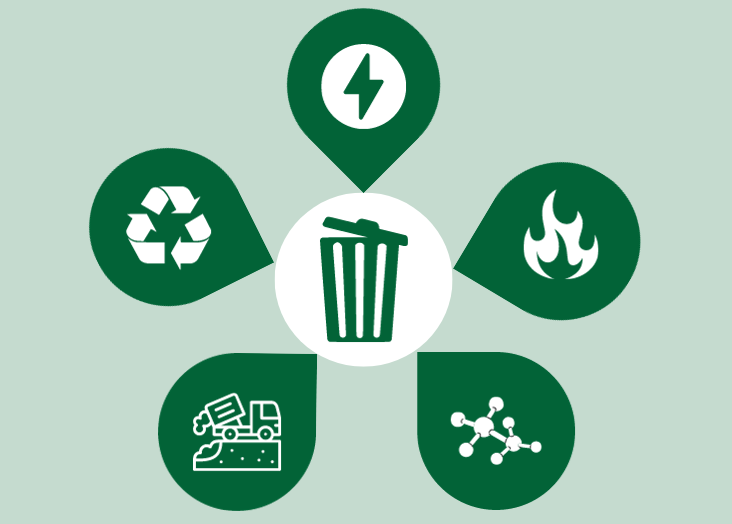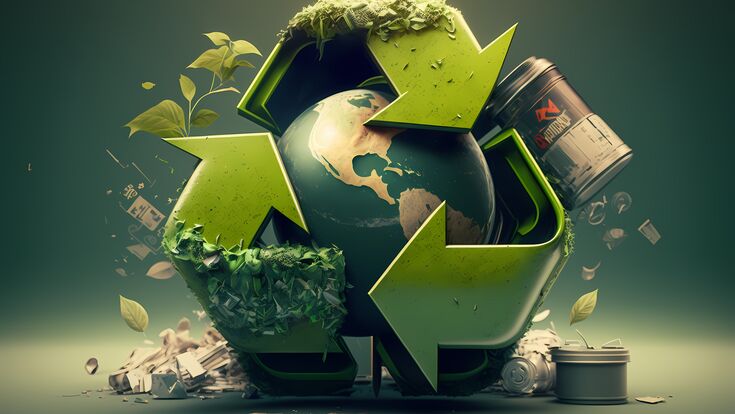The Effect of Recycling Lives Services on Communities and the Setting
The Effect of Recycling Lives Services on Communities and the Setting
Blog Article
Exploring Various Types of Waste in Modern Waste Management Solution
The contemporary landscape of waste monitoring entails navigating a complex range of waste types, each calling for specialized handling and disposal methods to minimize ecological effects. Municipal strong waste, hazardous waste, electronic waste, and natural waste each present distinct difficulties and opportunities for resource healing. Ingenious solutions such as wise waste containers and waste-to-energy innovations are arising as critical devices in enhancing efficiency and sustainability. Understanding these waste types is essential for promoting public recognition and motivating energetic participation in sustainable practices. What methods can properly resolve these varied kinds of waste while advertising a circular economic situation?
Local Strong Waste
Local strong waste, commonly described as house garbage or garbage, encompasses a variety of thrown out materials created by household, commercial, and institutional sources within a community. This waste stream normally consists of products such as product packaging, food scraps, lawn trimmings, paper, plastics, textiles, and thrown out household items. The monitoring of municipal strong waste is a vital element of metropolitan planning and public wellness, necessitating effective collection, transport, and disposal systems.
Efficient waste monitoring systems are created to lessen environmental influence while maximizing resource healing. Composting organic waste, such as food scraps and lawn trimmings, not only minimizes garbage dump use however likewise produces useful soil modifications.
Communities must additionally address the logistical and economic obstacles connected with waste administration. Implementing pay-as-you-throw systems, enhancing public recognition, and purchasing innovation can significantly improve waste diversion rates. By incorporating these techniques, municipalities can foster lasting neighborhoods, decrease greenhouse gas emissions, and save natural sources.
Hazardous Waste

Reliable contaminated materials administration entails several crucial steps: recognition, treatment, disposal, and segregation. Identification requires the category of waste based upon its hazardous homes. Partition guarantees that unsafe products are saved separately from non-hazardous waste to avoid cross-contamination. Therapy approaches, such as chemical neutralization, incineration, and stabilization, are employed to minimize the poisoning, quantity, or mobility of the waste. Disposal alternatives, consisting of safe land fills and underground storage, are selected to ensure long-term containment.
Regulative structures, such as the Source Preservation and Healing Act (RCRA) in the USA, offer standards and standards for contaminated materials monitoring. Adherence to these regulations, paired with innovations in waste therapy technologies, is essential in minimizing the threats related to contaminated materials.
Electronic Waste
Digital waste, commonly referred to as e-waste, represents a rapidly growing difficulty in waste administration systems internationally. This sort of waste incorporates disposed of digital tools and equipment such as smart devices, computers, tvs, and various other digital home appliances. The fast rate of technical advancement, coupled with decreasing product life-spans and consumer demand for the most recent tools, has actually tremendously boosted the volume of e-waste generated each year.
E-waste is particularly bothersome because of its complicated make-up, usually consisting of dangerous substances like cadmium, mercury, and lead, which pose considerable ecological and wellness dangers if not effectively taken care of. Alternatively, e-waste additionally consists of beneficial products such as gold, check this silver, and copper, which can be recouped and reused. The dual nature of e-waste-- both unsafe and valuable-- requires specific handling, reusing, and disposal processes.
Efficient e-waste monitoring involves stringent governing structures, durable collection systems, and advanced recycling modern technologies. Public understanding and involvement are essential, as improper disposal practices, such as unlawful unloading and informal recycling, intensify ecological contamination and health hazards. Enhancing e-waste administration practices is vital for minimizing environmental impact and recouping important resources in a significantly digital world.

Organic Waste
Organic waste, comprising kitchen scraps, yard trimmings, and farming residues, stands for a considerable portion of the worldwide waste stream. This kind of waste is eco-friendly, indicating it can be damaged down by microbes into easier natural substances. In spite of its possibility for natural decomposition, incorrect management of natural waste can lead to damaging environmental influences, including the exhaust of greenhouse gases such as methane, which add to climate modification.
Effective administration of natural waste is essential for decreasing these environmental impacts (recycling lives services). Composting is an extensively embraced method, transforming natural waste into nutrient-rich compost that can boost dirt wellness and farming productivity. Additionally, anaerobic food digestion is an emerging technology that transforms organic waste right into biogas, an eco-friendly power source, and digestate, which can be utilized as fertilizer
Municipalities and waste management entities must implement durable organic waste collection and therapy programs to take full advantage of the benefits of these procedures. Public education campaigns can likewise play a pivotal duty in motivating homes and businesses to separate organic waste from other sorts of waste. By prioritizing the administration of natural waste, cultures can reduce land fill usage, lower greenhouse gas emissions, and develop useful byproducts for agricultural usage.

Innovative Waste Monitoring
In the world of waste management, innovative techniques are transforming how societies manage their refuse, intending for sustainability and efficiency. One popular development is the implementation of wise waste containers furnished with sensing units that check fill degrees and maximize collection courses.
An additional notable growth is the adoption of waste-to-energy (WtE) technologies. By transforming non-recyclable waste right into functional energy through procedures such as incineration and anaerobic digestion, WtE decreases landfill burden and supplies a renewable resource resource. In addition, advancements in chemical reusing allow for the malfunction of complicated plastics right into their original monomers, allowing the development of brand-new, high-grade plastic items.
Furthermore, the round economic climate version is obtaining traction, highlighting the layout of products and systems that focus on reusability and resource efficiency. This all natural strategy urges industries to lessen waste generation from the outset. Via these cutting-edge strategies, contemporary waste administration systems are not only attending to the instant difficulties of garbage disposal but also leading the way for a more lasting future.
Conclusion
A detailed understanding of metropolitan solid waste, contaminated materials, digital waste, and organic waste, coupled with find more the execution of innovative waste monitoring options, is vital for minimizing environmental influences. Integrating technologies such as clever waste containers and waste-to-energy systems can enhance efficiency and sustainability. Recommended Site Efficient waste administration approaches not just foster source recuperation however likewise advertise public understanding and engagement, inevitably adding to the growth of a circular economic climate.
The contemporary landscape of waste administration entails browsing a complex range of waste types, each needing specialized handling and disposal techniques to reduce environmental influences. Metropolitan strong waste, dangerous waste, digital waste, and natural waste each present distinct difficulties and possibilities for resource recuperation.Electronic waste, generally referred to as e-waste, represents a quickly growing obstacle in waste management systems around the world. Through these ingenious approaches, contemporary waste monitoring systems are not just dealing with the immediate difficulties of waste disposal but also leading the method for a more sustainable future.
An extensive understanding of local strong waste, dangerous waste, electronic waste, and organic waste, coupled with the application of cutting-edge waste administration options, is crucial for minimizing ecological impacts. (recycling lives services)
Report this page